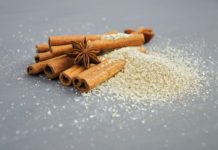Adapting to a diet that supports lower cholesterol levels might seem overwhelming. The challenge involves not only selecting the right foods but also creating meals that are both appealing and satisfying. The good news is that with new recipes, health-conscious food options, and recent findings, your low-cholesterol diet can now be as tasty as your previous one. When the diet is easy to follow, enjoyable, and adhered to, you’ll find more flexibility for the occasional treat. Discover these delectable foods that can assist in managing your cholesterol.
Understanding Cholesterol and Its Impact
Cholesterol is an essential component of cell membranes and a precursor to specific hormones and vitamins. However, when cholesterol accumulates in arteries, it can lead to atherosclerosis—a condition marked by the narrowing and hardening of arteries due to plaque buildup. This restricts blood flow, increasing the risk of heart attacks and strokes. Reducing LDL cholesterol and maintaining healthy HDL (high-density lipoprotein) cholesterol levels is vital to prevent these complications.
Harnessing the Power of Plant-Based Foods
Plant-based foods are champions in the battle against high cholesterol. Fruits and vegetables are rich in fiber, antioxidants, and other compounds that aid in lowering cholesterol levels. Soluble fiber, present in foods like oats, beans, and fruits, binds to cholesterol, facilitating its elimination from the body. Nuts, especially almonds and walnuts, contain healthy fats, fiber, and plant sterols linked to lower cholesterol levels.
Embracing Heart-Healthy Fats
While some fats are detrimental to heart health, others can be allies in the quest to lower cholesterol. Unsaturated fats, found in foods like olive oil, avocados, and fatty fish, can actually raise HDL cholesterol and lower LDL cholesterol levels. These fats are integral to the Mediterranean diet, renowned for its positive impact on heart health. Replacing saturated and trans fats with unsaturated fats is a powerful dietary shift for reducing cholesterol levels.
Unveiling the Fiber Connection
Fiber is a nutritional superhero when it comes to managing cholesterol. It acts like a sponge, absorbing cholesterol and preventing its absorption in the intestines. Besides oats and beans, whole grains like brown rice, quinoa, and whole wheat products offer excellent sources of dietary fiber. Incorporating these foods into your diet can help maintain healthy cholesterol levels while providing sustained energy and promoting digestive health.
Opting for Omega-3 Rich Foods
Omega-3 fatty acids are celebrated for their heart-protective properties. Fatty fish such as salmon, mackerel, and sardines are rich sources of these beneficial fats. Omega-3s are known to lower triglycerides—a type of blood fat—and reduce inflammation, thereby supporting overall heart health. For those who prefer plant-based alternatives, flaxseeds, chia seeds, and walnuts also supply heart-healthy omega-3s.
Limiting Dietary Cholesterol and Trans Fats
While focusing on adding heart-healthy foods, it’s equally important to curtail certain dietary components that contribute to high cholesterol. Dietary cholesterol is present in animal products like egg yolks and organ meats. While the impact of dietary cholesterol on blood cholesterol levels can vary, it’s wise to moderate consumption of these foods. Moreover, trans fats, often found in processed and fried foods, can elevate LDL cholesterol and lower HDL cholesterol. Reading food labels and choosing products with zero trans fats can help reduce their intake.
Balancing Macronutrients and Controlling Portions
Maintaining a balance of macronutrients—carbohydrates, proteins, and fats—is crucial for cholesterol management. A diet overly rich in refined carbohydrates and sugars can contribute to unhealthy cholesterol levels. Instead, opt for complex carbohydrates like whole grains, combined with lean proteins and healthy fats. This creates a balanced meal that supports heart health. Practicing portion control also prevents overeating, aiding in weight management and overall cardiovascular well-being.
Unveiling the Role of Sterols and Stanols
Plant sterols and stanols are natural compounds found in certain foods that possess the remarkable ability to lower LDL cholesterol levels. These compounds have a structure similar to cholesterol and can interfere with cholesterol absorption, resulting in reduced blood cholesterol levels. Foods fortified with sterols and stanols, such as specific margarines and yogurt products, can be valuable additions to a cholesterol-lowering diet.
Incorporating Antioxidant-Rich Foods
Antioxidants are renowned for their ability to combat oxidative stress and inflammation—both contributors to heart disease. Colorful fruits and vegetables like berries, citrus fruits, and leafy greens are brimming with antioxidants such as vitamin C and beta-carotene. These nutrients not only support heart health but also contribute to overall well-being.
The Journey of Long-Term Commitment
Lowering cholesterol through dietary adjustments is a gradual process that demands consistency and dedication. It’s important to note that while dietary changes can have a positive impact, they may not replace the need for medication in some cases. Consulting a healthcare professional before making significant dietary shifts is advisable, especially for individuals with existing health conditions.
Lowering cholesterol through diet isn’t a quick fix; it’s a journey toward improved heart health and overall well-being. By incorporating plant-based foods, embracing heart-healthy fats, and practicing portion control, individuals can take significant steps to manage cholesterol levels and mitigate the risk of heart disease. It’s a journey guided by the understanding that the foods we choose to nourish our bodies can profoundly influence our cardiovascular health, contributing to a longer and more vibrant life.






















